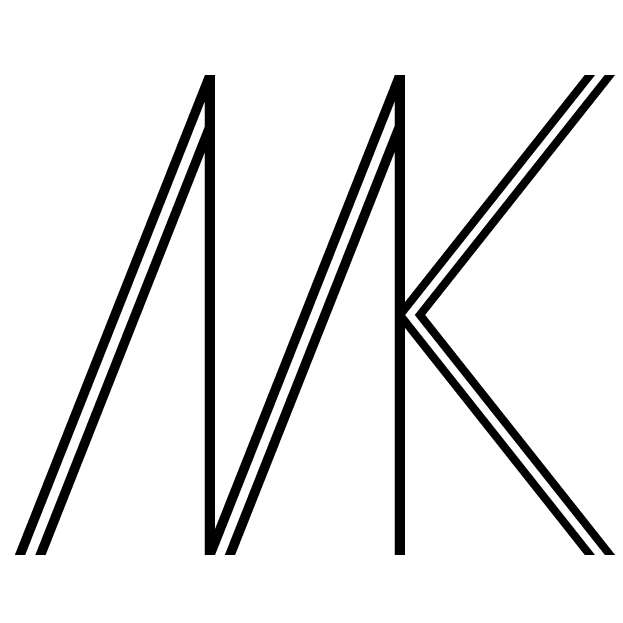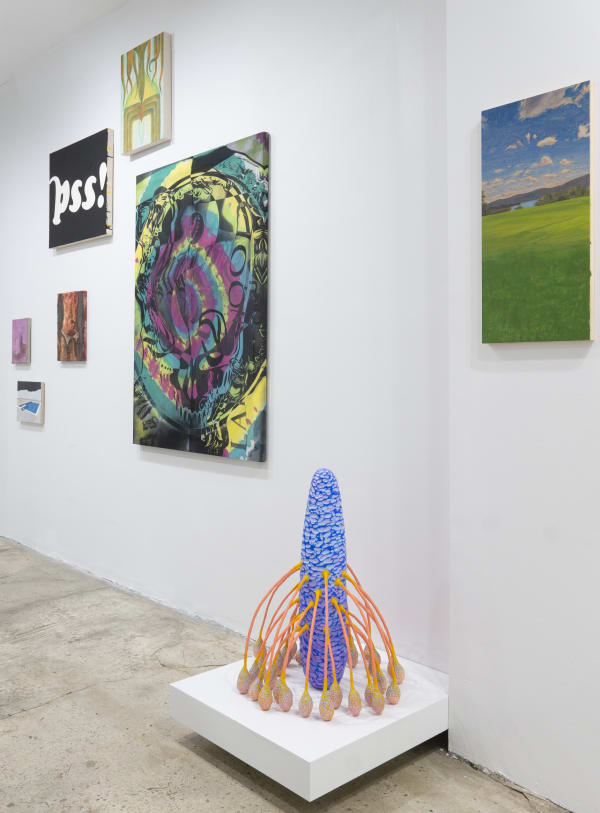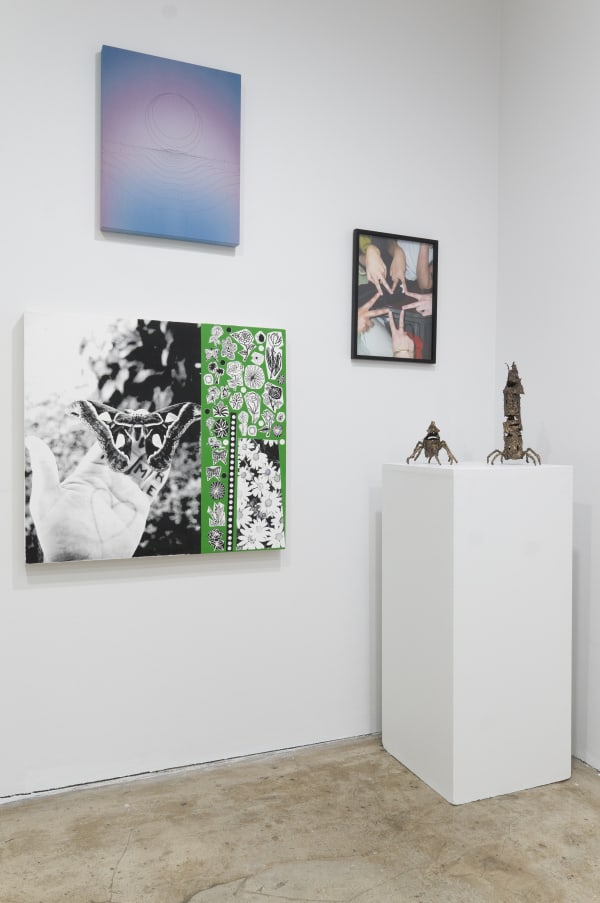Ghost Ship: curated by BOZOMAG and Ramiro Hernandez
GHOST SHIP
Curated by BOZOMAG and Ramiro Hernandez
March 29, 2024 - May 11, 2024
Massey Klein Gallery is pleased to present GHOST SHIP, a group exhibition curated by BOZOMAG and Ramiro Hernandez. The exhibition will be on view from March 29th, 2024 through May 11th, 2024. An opening reception will be held on Friday March 29th from 6-8pm. For press inquiries or questions regarding works available, please email info@masseyklein.com.
Featuring Work By: Drew Bennett, Scott Benzel, Tanya Brodsky, Jonathan Casella, Preston Douglas, Emily Endo, Roberta Gentry, A History of Frogs, Sarah Ippolito, Robert Levine, Ryan Martin, Joshua Miller, Adam Rabinowitz, Kristopher Raos, Leah Rom, Erica Vincenzi, and Zachary Warwas.
GHOST SHIP is a “Cabinet of Curiosities.” Historically known as Kunstkammers or Wunderkammer (wonder-rooms), these cabinets of curiosities were encyclopedic collections of objects with undefined categorical boundaries. Much like its traditional counterpart, GHOST SHIP explores the wondrously impossible possibilities of objects, their interaction with each other and the world around them, and the value we embed them with. Bringing together a diverse group of multidisciplinary artists, the exhibition is an exploration of the relationship between space and objects, in all of their inner, outer, physical, and metaphysical iterations. Through questioning the elements of art-making, such as intention, influence, atmosphere and environment, and interaction, the idea of quantum entanglement emerges and guides the viewer on a wondrous exploration of everlasting entwined fundamental connections, both intentional and accidental.
Drew Bennett’s oil on wood paintings are a practice in active observation. His work seeks to establish a deeper awareness of and connection between the human body and the natural world, and represent an ongoing exploration into a painting’s ability to convey Bennett’s gratitude for the world around him. His paintings celebrate the natural world, taking inspiration and source material from the landscape of Northern California. The artist lives and works in Oakland, California.
Scott Benzel’s interdisciplinary works investigate the development, processes, and inherent contradictions in contemporary mass media systems of production, collective cultural identities, and mythologized cultural histories. As a visual artist, musician, performance artist, and composer, Benzel’s work blurs the distinction between representation and abstraction and challenges the viewers’ perception of space and reality. The artist lives and works in Los Angeles, California.
Tanya Brodsky’s works explore the poetics of futility in the structures that govern everyday life. Her work approaches incongruities within the built environment as a tactic for revealing the hidden logic and relationships concealed by familiar use. Brodsky’s work modifies elements of architecture and technology, recreating, isolating, and generating new, and often absurd, interrelationships. The artist lives and works in Los Angeles, California.
Jonathan Casella’s work is a personal investigation into the rearticulation of visual language. His work explores how human perception is informed and influenced by form and pattern, color, and coded visual languages. Casella’s distinct hard-edged technique challenges and deconstructs pre-existing understandings and visual syntax. The artist lives and works in Los Angeles, California.
Preston Douglas is a multidisciplinary artist who works between painting, fashion, and performance. His work challenges the traditional limitations of painting by incorporating sculptural elements, and explores how performative forms can create spiritual, non-religious atmospheres of faith for collective unity. Through surfaces that allude to both beauty and darkness, Douglas provides viewers with the space to question contemporary cultural conviction. The artist lives and works in Los Angeles, California.
Emily Endo’s multidisciplinary practice pulls from the disparate, yet conjoined, histories of science and mysticism. Working in glass, organic media, and aroma molecules, Endo’s work references the transformative relationships between body, material, and space. Adornment, corporeal self-expression, and the fragmented body intersect with historical and imagined material animacies to create mythopoetic objects and figures. The artist lives and works in Joshua Tree, California.
Roberta Gentry’s work is inspired by the natural world and the balance of order and chaos that exists within it. Through her paintings, which incorporate color and contrast as a rhythmical element, Gentry explores the connections and conflicts that occur between architecture and biology, questioning the divide between natural and artificial. The artist lives and works in Los Angeles, California.
A History of Frogs is a collaborative project by multidisciplinary artists Antonia Pinter and Chase Biado to explore form, the shape of things, the change of forms, and how playing with the forms we live with can change the way we live. Their collaboration is an experiment to destabilize form through play-logic to find new relationships between people and objects, with both the idea of self and their constructed objects being conceptualized as ever-evolving and fluid. The artists live and work in Los Angeles, California.
Sarah Ippolito works in sculpture, installation, and drawing to explore biomorphic exuberance and immanent vitality, alongside a deep interest in how humans identify with, desire, or eschew the bodies of other organisms. The distinct and vivid color in Ippolito’s work is informed by the natural world, referencing states of ripeness, warning,toxicity, defensive posture, camouflage, or sexual maturity. The artist lives and works in Los Angeles, California.
Robert Levine’s paintings play with the often-indistinct differences between art and things. With a focus on common, everyday objects, the artist embraces banality to challenge and expand the viewers’ perception, not only questioning familiarity but also what classifies as “art.” Levine meticulously crafts these objects in sculpted and painted wood, or precise and realistic paintings, allowing the artist’s hand to be visible only upon close inspection and validating the artist’s ability to transcend the common and quotidian. The artist lives and works in Venice, California.
Ryan Martin’s paintings and drawings place his subjects in surreal, dream-like environments. Influenced by his childhood in the 1980’s and 1990’s in Southern California, vivid hues dominate his work. The artist nods to both his Native American and Russian roots by incorporating haloes of vibrantly-hued flora and fauna, a reference to warbonnets, which are attributed to males and masculinity during Native American rituals, and kokoshniks, which are solely attributed to the feminine. The artist lives and works in the San Francisco Bay Area, California.
Joshua Miller’s painting practice is compiling a visual thesaurus, which both enables and necessitates a wide array of subjects and painterly techniques. His work winds its way through the mundane, pop, technology, iconography, and conceptions of the other. Drawing inspiration from popular culture, Miller’s paintings explore the phenomenology of the visual language, assuming the form of an imagery atlas that will tell the history of painting.The artist lives and works in Los Angeles, California.
Adam Rabinowitz’s works are manifestations of appearance and disappearance through matter, space and light. Rabinowitz’s works are influenced by Walt Disney animation films, as well as by abstract post-war American art. His paintings are marked with psychedelic configurations and seem to be affected by heat or stuck by war, recalling the burnt landscapes of the Sinai Desert. The artist lives and works in Los Angeles, California and will have an exhibition at BOZO Mag in April 2024.
Kristopher Raos’ expansive and technical range of visual language is communicated through colorful paintings, sculptures, and drawings, each created through an intense focus on his development as an artist. Generating content from a spontaneous array of sources including music, found objects, and ‘On The Fly Photographs,’ Raos’ work is of a particular contemporaneity. Raos’ work illustrates his interest in humor, precise (DIY) techniques, and attention to craft.The artist lives and works in Bakersfield, California.
Leah Rom's photography is often immediate and spontaneous. Candid moments of her friends, family, including her beloved mother, and local LA artists make up her world. These smiling stills, devoid of cynicism, are often lit by a controlled flash setting, even during the brightest daylight. A reframing of photographic categories, every photo is approached from the same elevated perspective of art. From social media’s democratized photo, to editorial, to a gallery setting, Rom's work is the antithesis of photography being dead. Instead, her photos show us that photography has never been more alive, as the camera takes on a daily role in people’s lives as a tool for documentation and communication.
Erica Vincenzi’s work explores the implication, cropping and balancing the visual weight of her paintings in a way that is emotionally and philosophically informed by literature. Her subjects are recognizable, though defamiliarized to the point of representing more fiction than fact. Like replaying a memory, fantasy weaves in and out of her work with an ominous absurdity. Vincenzi zeroes in on an emotional atmosphere where delicious and alluring sensations call from unexpected settings, and the goal of visual completion is always out of reach. The artist lives and works in Los Angeles, California.
Zachary Warwas’ multidisciplinary practice in product design and interactive sculptures addresses the ongoing rigidity between design and fine art, utilitarian and play. Reimagining the blank, white cube gallery pedestal in times of Duchampian wonder, Warwas addresses the pedestal as art itself. Held by glue-less Japanese joints, and tapered towards the cement ground, the pedestal appears reminiscent of a ship's masts or some other unknown missing component from a wooden vessel. As a cabinetmaker in his previous life, Zak found solace and fulfillment in the transformative process of turning raw materials into exquisite, finished products that both disappear into the space, and command the room. A self-proclaimed utilitarian, Zak thrives on solving problems and uncovering the underlying needs that drive innovation.
BOZOMAG is a gallery located in both Cresthaven and Pasadena, California. Run by Danny Bowman and Alexandra Grunbeck, the gallery exhibits many of the artists included in GHOST SHIP including Jonathan Casella,Drew Bennett, and Adam Rabinowitz. The gallery was recently featured in the Los Angeles Times.













